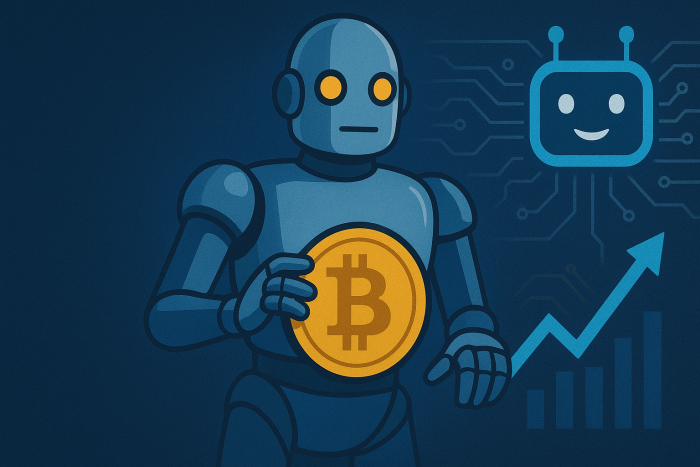Introduction
In 2025, the frontier of crypto automation is shifting faster than ever. What used to be simple rule-based trading bots is evolving into full AI agents that can interpret market narratives, make judgment calls, and even collaborate across chains. But with that power comes new risks: regulatory scrutiny, bot detection arms races, adversarial attacks, and growing concerns about fairness and market integrity.
This article explores where crypto bots are now, what’s coming next, and what CoinForgeCapital’s readers should watch closely.
Section 1: The New Wave — AI-Driven Crypto Agents
Nansen AI — a case study
Blockchain analytics firm Nansen recently launched Nansen AI, a trading chatbot built on Claude (Anthropic) but tuned with Nansen’s proprietary on-chain data.
While it currently serves as a signal tool, Nansen plans to enable automation — letting users deploy AI agents to execute trades.
This is emblematic of a broader shift: the fusion of LLM (large language models) + domain data (on-chain, order books, sentiment) to build bots that can “reason” more holistically.
Multi-chain AI bots
Newer players are targeting cross-chain trading automation. For instance, AIQuant is launching bots capable of executing autonomously across blockchains like Solana, BNB, Ethereum — bridging liquidity and strategy.
This adds complexity: strategies must contend with varying block times, gas models, bridge risk, and latency.
AI agents in payments
Beyond trading, crypto bots are heading into payments territory. Google recently unveiled an “Agent Payments Protocol (AP2)” that envisions AI agents conducting transactions on behalf of users, with cryptographic mandates and accountability.
Partners include Mastercard, PayPal, Coinbase, etc. That means bots may soon not just trade your crypto — they might spend/stake/move it under guided autonomy.
Section 2: The Detection and Defense Arms Race
“BotDetect” — decentralized detection
Because bots can manipulate markets or exploit vulnerabilities, detection is becoming essential. A recent academic proposal, BotDetect, outlines a decentralized federated learning framework for spotting malicious financial bots on EVM chains (Ethereum, BSC, etc.).
Each node trains local models based on transaction and contract interaction data; models are then aggregated on-chain without sharing raw data. This preserves privacy yet builds a communal bot-detection system.
This hybrid of ML + blockchain orchestration may become part of anti-bot infrastructure in DeFi.
Adversarial attacks on trading agents
Bot builders must also defend their bots. Reinforcement learning–based trading agents are vulnerable to adversarial manipulation by third parties. For example, research shows that a “gray-box” adversary — i.e., one who does not fully know the bot’s internals — can degrade its performance by injecting crafted trades around it.
Thus, bot architectures must be robust not just to market noise, but to strategic sabotage.
Risk-sensitive LLM + RL hybrids
On the defense side, bot research is evolving. The “FinRL-DeepSeek” model fuses RL with LLM risk assessments: the RL component drives execution, while an LLM parses news and sentiment to adjust risk constraints.
This kind of hybrid is better suited to volatile crypto markets, where pure RL may overfit historic patterns.
Section 3: Regulatory Pressure, Scams, and Bot Misuse
Regulatory watch
The rise of automated agents in financial markets will attract regulatory scrutiny. Agencies in the U.S. and EU are already debating how algorithmic and AI trading should be treated under securities, market abuse, and consumer rules.
CoinForgeCapital’s audience should expect forthcoming guidance on algorithmic trading in crypto, especially as AI agents blur the lines.
Scams and misuse
As bots become more sophisticated, so do the scams using them. AI-powered crypto scams have surged — deepfake voices, synthetic social media profiles, bots that auto-launch fraudulent tokens, etc.
In one case, forex trading platforms marketed “bot services” that promised guaranteed high returns; authorities later determined they were Ponzi schemes.
Exchanges enabling bots
Even major exchanges are expanding bot infrastructure. On Binance, as of September 30, 2025, new trading pairs (AEVO/USDC, ME/USDC, SNX/USDC) will be enabled with spot algo orders and grid / DCA bots for those pairs.
This both democratizes bot access and expands the battleground for competition.
Section 4: What CoinForgeCapital Should Watch & Advise
-
Bot transparency & auditability
-
Bots should carry verifiable logs, simulation trails, versioning. As automated agents gain power, trust will depend on transparency.
-
Open models (or open explainability) may become a differentiator.
-
-
Robustness & adversarial resilience
-
Bot developers must anticipate intentional manipulations — front running, sandwich attacks, trade bursts around bots.
-
Ensembles, randomized policies, meta-controllers may help.
-
-
Bot ethics & market fairness
-
Bots might exacerbate inequality: large actors with high compute and data advantage could dominate.
-
Consider “bot fairness” design: e.g. rate limits, anti-dominance checks.
-
-
Regulation readiness
-
Follow regulatory signals: algorithmic trading disclosures, “market maker” definitions, audit rules.
-
Engage with policy: crypto bot frameworks may need participation in shaping safe regimes.
-
-
Education & risk warnings
-
Many retail users will adopt bots without knowing the risks (model failure, incorrect signals, adversarial attacks).
-
Documentation, stress tests, risk disclaimers are crucial.
-
Conclusion
Crypto bots are entering a new era: no longer mere automations, but semi-autonomous agents combining LLM reasoning, reinforcement learning, cross-chain dex strategies, and risk modules. The stakes are higher — for profits, but also for market integrity, regulation, and ethics.
At CoinForgeCapital, staying ahead means not just evaluating bot performance, but anticipating the next layer: detection, defense, adversarial resistance, and regulation. The bot wars are beginning — and those who understand the rules will win.






